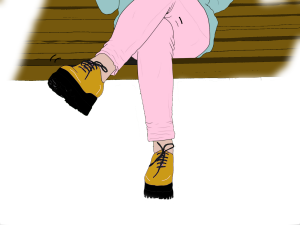Thinking beyond the neuroscience of the misophonia activation, we can focus maybe on the non-conscious purpose of the condition: why it happens rather than how. We might accept that somewhere, deep inside a person, there is a  compelling necessity to behave in this specific way when a certain event occurs.
compelling necessity to behave in this specific way when a certain event occurs.
This is often called the pro-symptom perspective: the implicit process that responds to hearing gum chewing, perhaps, and eliciting anger, or activates a feeling of rage when a certain person swings their leg.
We might think about how misophonia is a signal.
It is telling us something about experience that occurred in our life, maybe long ago. Its purpose is to send us the message and to help us with that set of circumstances. And it may be that those circumstances – and for a whole range of reasons – cause a disruption in a person’s ability to connect with others. Misophonia affects an individual’s ability to attach and attachment is one of three core needs that we seek to meet, to be able to self-actualise. At that moment, well-meaning others will often say, “Just be yourself.” But, perhaps, since we are social creatures who have evolved to be a part of a group – a tribe – we feel better not when we are an individual, disconnected from those physically around us. Maybe those caring individuals should say, “Be one of us. Let us be we.”
That doesn’t mean being a member of a group in which every facet of how bad this is can be considered. It doesn’t need us to rate our experience as being somehow worse than someone else’s: trying to create a ranking of discomfort. How unfair all this is. Who, in the group, is the king or queen of misophonia? Most research shows that expressing anger, that venting actually makes its effects worse, not better. And group venting initiates separation – it creates divisions between them and us. Certainly not being we!
Because it really should not define who you are.
A group – ideally – is a community in which we can exchange meaningful, emotional concepts and do the things  that mean most to make us, us. And to consider the messages that misophonia is sending.
that mean most to make us, us. And to consider the messages that misophonia is sending.
We need to stop insulting these signals we receive. We are insulting them by saying they are signs of weakness, of difference, of craziness. Because they are telling us – every one of us – what we absolutely need to know.
Everyone alive today is here because our ancestors were anxious humans. When we lived on the plains of Africa our non-conscious, instant ability to respond to danger determined our potential to survive. Those who lacked the responsive trait to activate fight or flight failed in the process of survival. Generally it was their DNA that ended as part of a leopard’s lunch. Those ancestors responding implicitly, escaping from both predators and shadows that just might be predators, passed on their anxious traits.
The implicit response is activated by a process called neuroception. This word became well-known through the polyvagal theory of Stephen Porges – it simply refers to a process that scans sensory experience for danger. Am I safe or I am in danger? It is not conscious: it requires no thought at all. In fact it happens so quickly that the process can be completed before we have conscious awareness of events – the body is prepared for conflict or escape and the smart brain’s ability to think is down-regulated before conscious thinking about it begins.
 Misophonia, thinking of it as an error in neuroception, is a process that utilises circuits, structures and processes present in the brains of everyone. It is developed through experience – a person cannot be born with misophonia. No-one can catch misophonia from someone else. It happens for a reason and that reason is an intention to enhance a person’s chances of survival. And misophonia cannot be permanently removed by medication, any more than drugs are available that might cause you to specifically forget how to ride a bicycle or play the piano – assuming you already could!
Misophonia, thinking of it as an error in neuroception, is a process that utilises circuits, structures and processes present in the brains of everyone. It is developed through experience – a person cannot be born with misophonia. No-one can catch misophonia from someone else. It happens for a reason and that reason is an intention to enhance a person’s chances of survival. And misophonia cannot be permanently removed by medication, any more than drugs are available that might cause you to specifically forget how to ride a bicycle or play the piano – assuming you already could!
There is the message. What is it saying to you?

